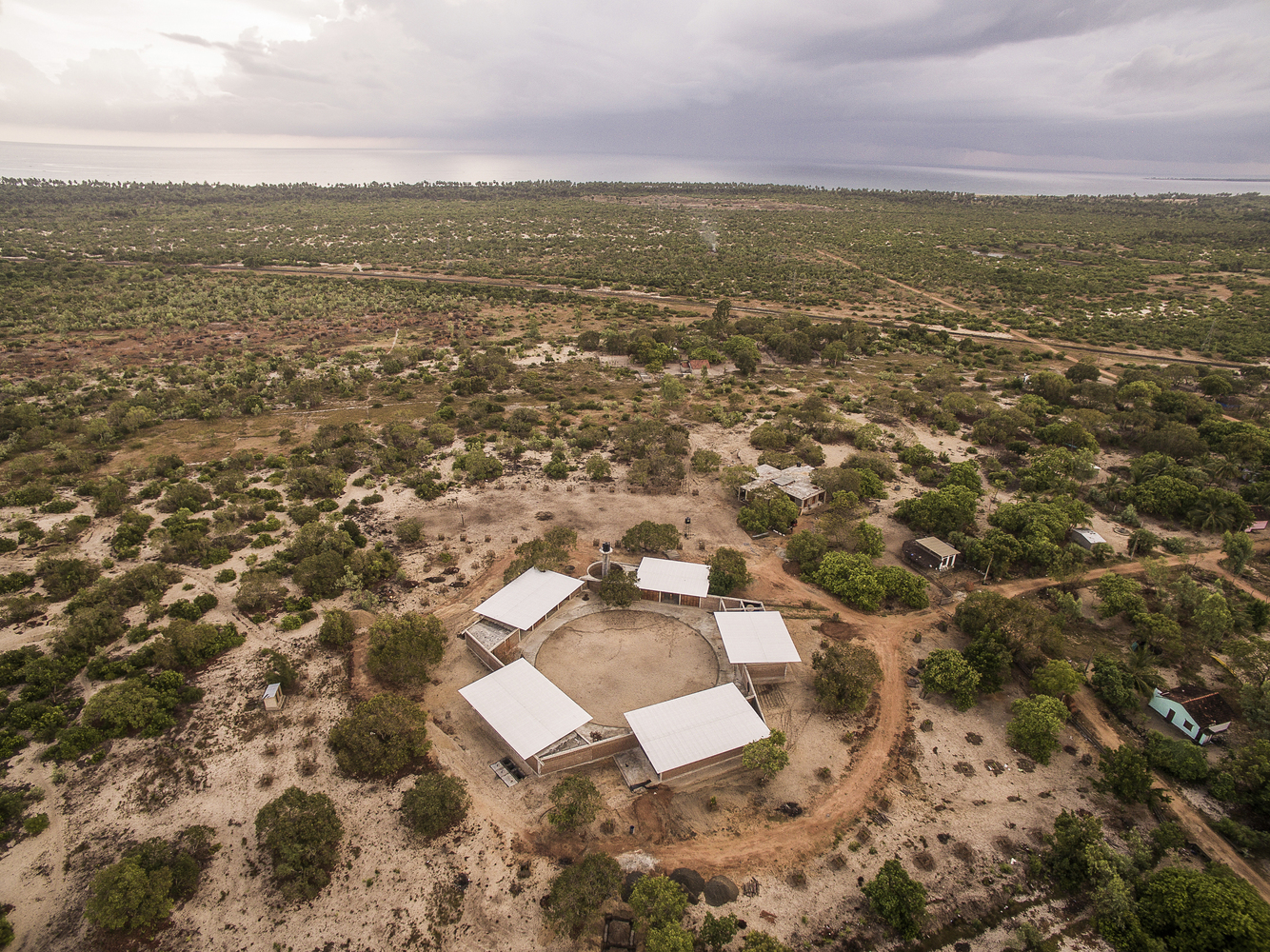
In 2013, a small organisation with the goal of reconciliation between the two main ethnic groups in Sri Lanka through equal access to education came up with an idea. The organisation approached feat.collective with the wish to build a centre—Lanka Learning Centre—for its teaching activities on the thinly settled east coast of Sri Lanka.
Location and Program
The building site is located in Parangiyamadu, a small fishing village to the south of Kalkudah. The village is composed of a randomly arranged number of huts between tall palm trees. Some families have been assigned concrete huts by the government, some own their own mud-brick houses, and many live in tin huts or in modest dwellings made of palm leaves. A simple unsecured network of paths runs through the village. A clay street leads out of the settlement and goes from the ocean to a regional main street inland.
feat.’s stated goal was to accompany the project from the preliminary assessment to completion and initial operation together with the locals, future users, and volunteers.
In cooperation with the Institut für räumliches Gestalten und Entwerfen at the University of Stuttgart, feat. was able to develop a comprehensive analysis about primitive construction principles, local and cultural peculiarities, and climatic demands. Together with the students, a workshop was conducted at the location with political and religious representatives and future users of the space to evaluate different use scenarios. Based on these premises, feat. developed the room program for a training and education centre, the LANKA LEARNING CENTER (LLC).
The aspect “Help to Self-Help” meant that the project did not aim for an isolated and purely academically motivated design, but that it created a socially and locally integrated construction project. The use of local materials and implementation of traditional techniques in a familiar architectural language encouraged a bilateral learning process, at the end of which the future users of the building had a high level of acceptance for and identification with their building.
Archetype Community House
The entire region around the coast is on sandy terrain, which means that very few clusters of vegetation mark the landscape. Outside of monsoon times, the climate is hot and dry.
Considering the difficult climatic situation, the maintenance of the existing vegetation was an important parameter.
The owner’s wish to have a large, flexibly usable open space could therefore be met very directly through the consolidation of the clearing with the building units. The school building precisely fills the empty spaces between the existing trees and therefore profits from their shade. The resulting concentric form evokes pictures of archetypal community architecture, as it can be found worldwide.
The Local Construction
From the beginning, the dominant norms of the local architecture were seen as the source for the design. From this starting point, ideas were developed along the way, different versions were created on location, and decisions were made in discourse with those involved in the planning.
The goal was to create structural and technical simplicity through a sequential development of the buildings around the courtyard.
The different pavilions are connected by the shared back wall. This meanders as a joining and protecting element along the stock of trees around the clearing and thereby defines a clear exterior space.
The exchange between structure and pattern as well as the precise placement of individual openings offer an orientation toward the inner space and help give the exterior spaces between the structures an identity.
The Use
The complex’s orientation toward the street creates a natural entrance. The visitors come to the courtyard – an expansive, round sand area that is surrounded by two deep tiers, which offer shaded seating opportunities under the two overhanging roofs of the attached buildings.
Five pavilions stand around the courtyard. One of the buildings houses the administration, another contains the kitchen and canteen, two are classrooms, and one contains the workshop. The respective side uses (storage, plumbing, water tower) are directly adjacent to the buildings. The encircling path functions as a junction between the uses as well as a platform leading to the central area and the heart of the complex.
Structure and Materiality
The concrete skeleton construction was placed on point foundation to save money through minimal cement use. The buildings were braced and offer protection from tsunamis through the connection of all supports at the lower and upper ring beams.
Handcrafted, locally sourced bricks fill the wall panels of the encompassing wall in different configurations. Folding doors made of massive teakwood with a horizontal lamelle edging, which lead to the courtyard, create maximum flexibility between the inner and outer space, and encourage interaction between the different groups using the building.
The center’s simple construction guarantees that the groups that use the building will be able to handle its upkeep without complex background knowledge. The construction of the building is laid out so flexibly that adjustments can be made to accommodate different uses.
This design aimed to guarantee that the building will always be able to be adjusted to meet the needs of the people who use it, thereby leading to high acceptance of the centre in the community.
Gallery:

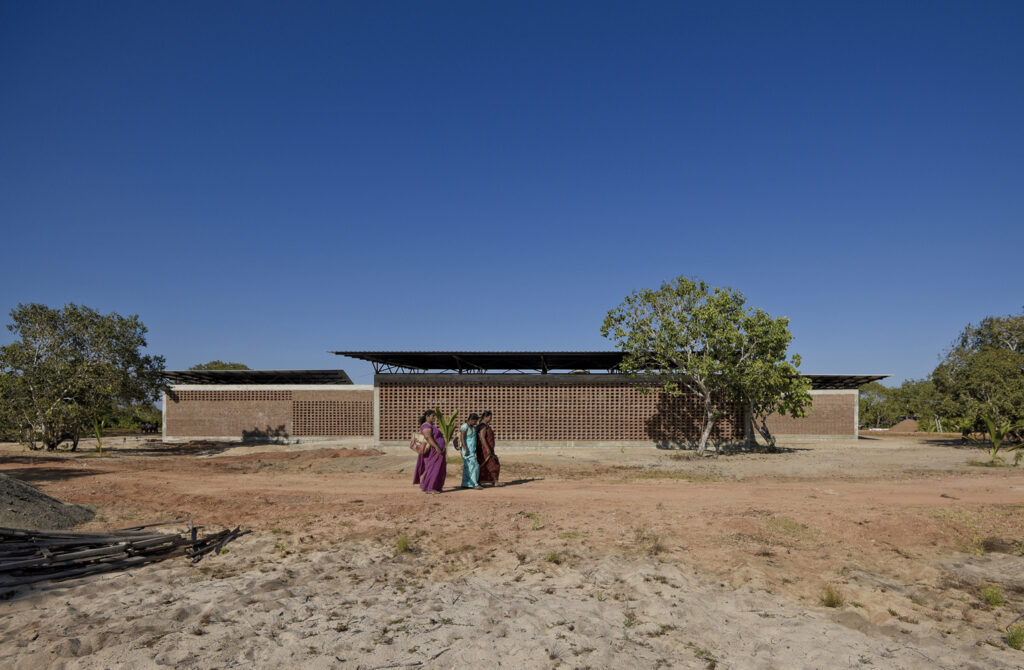


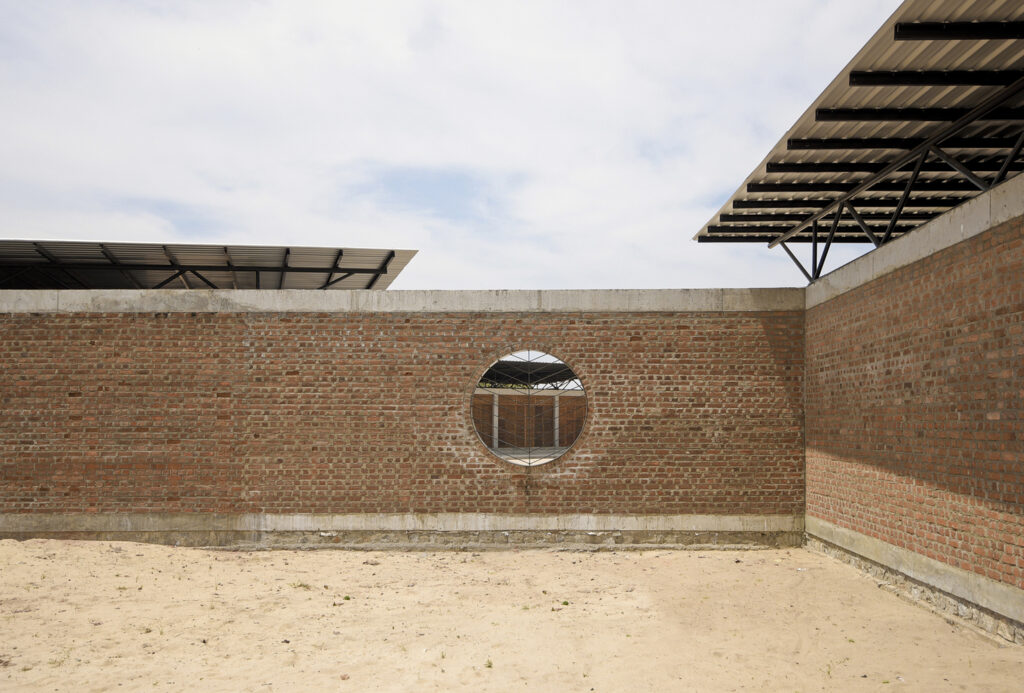


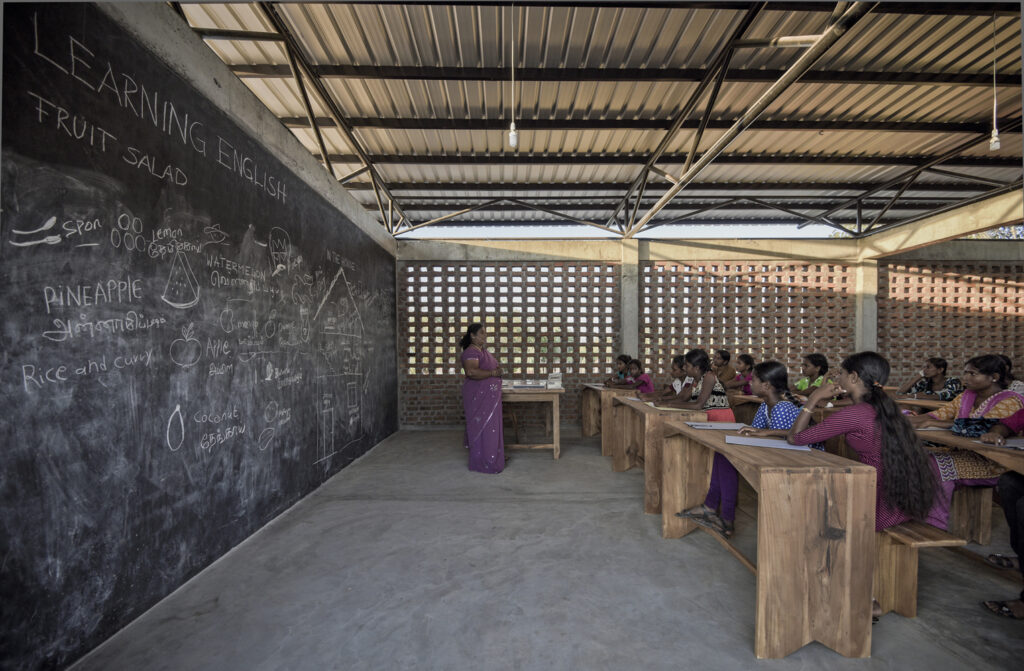
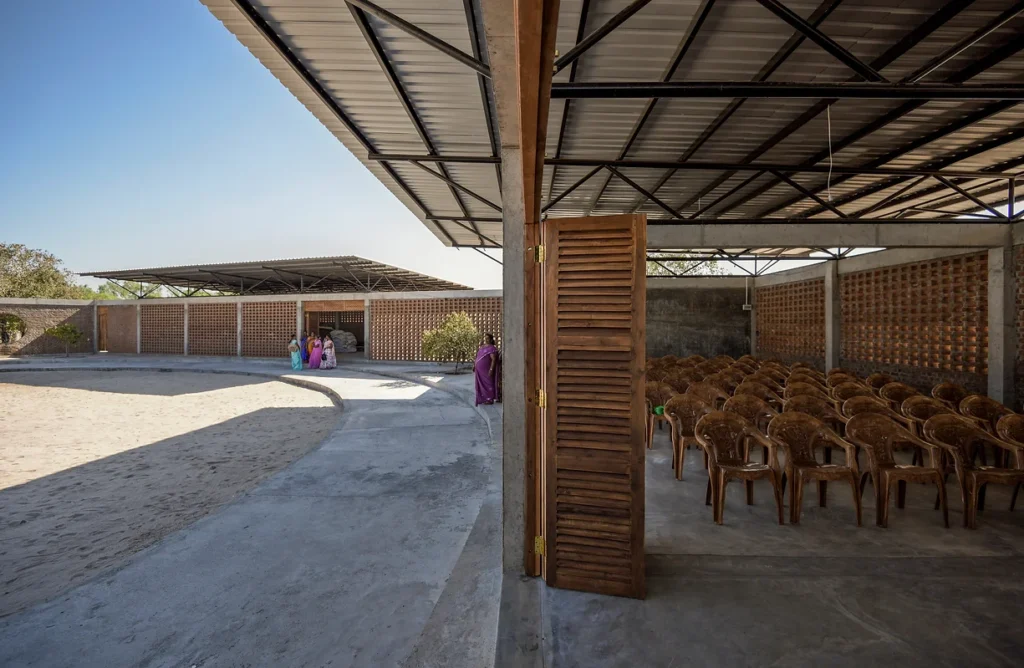





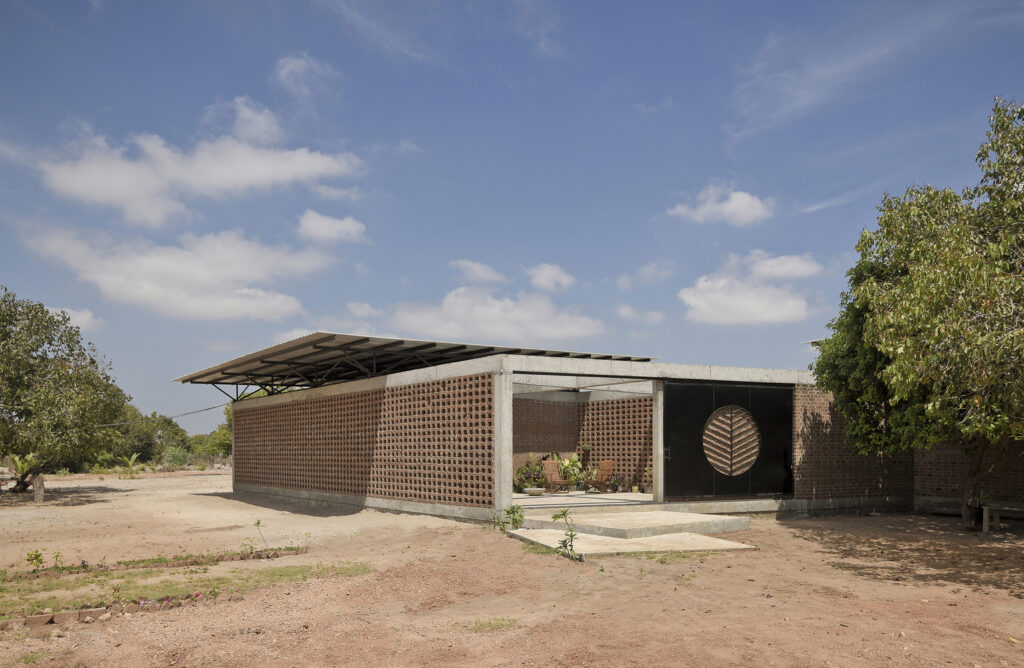
Drawings:


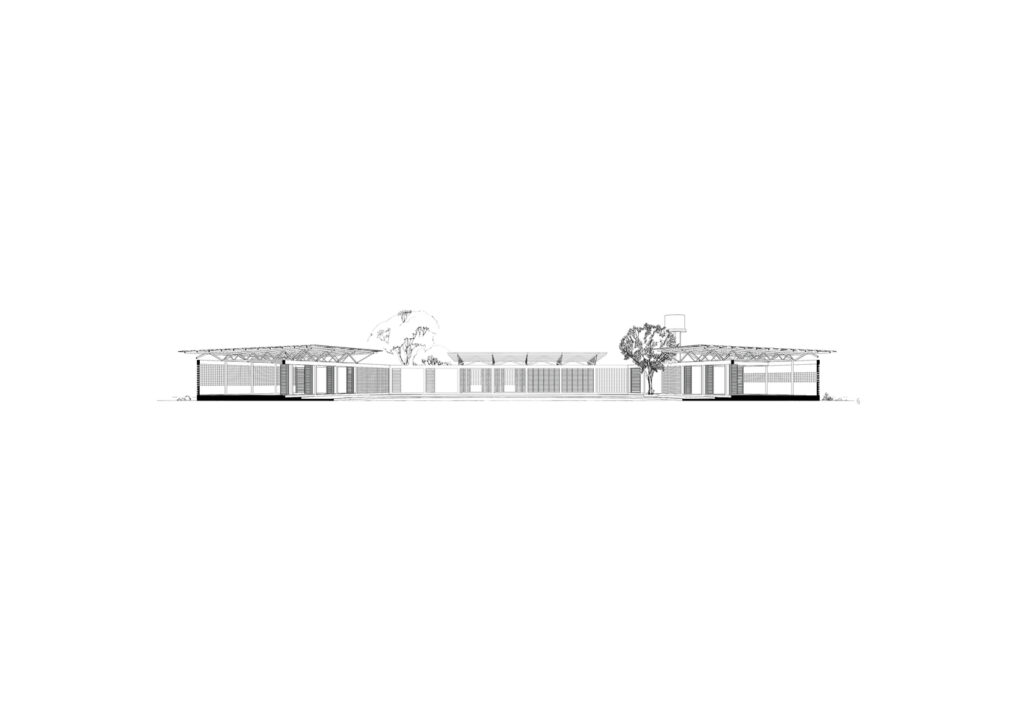

Project Details:
Name: Lanka Learning Centre
Location: Parangiyamadu, Batticaloa, Sri Lanka
Status: Built (2016)
Area: 710 sq. m.
Typology: Educational Architecture
Designed by: feat.collective
Design Team: Matthias Both, Carolin Lintl, Felix Lupatsch, Noemi Ott, Valentin Ott, Stefanie Schwemle, Spela Setzen, Felix Yaparsidi
Cooperation: IRGE, University of Stuttgart, Transsolar Klima Engineering, Stuttgart, MBKI Bau-Ingenieure, Stuttgart
Description: feat.collective
Photographs by: Barbara Vetter – Vincent Heiland






